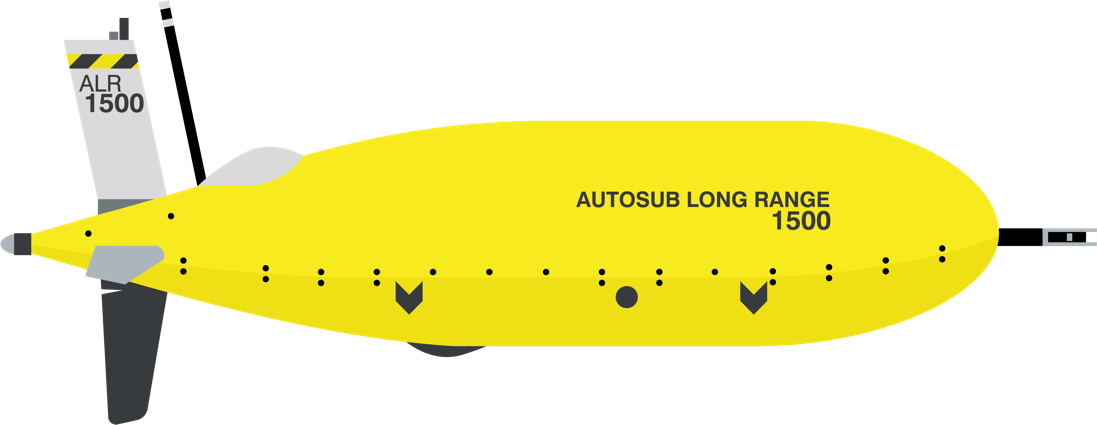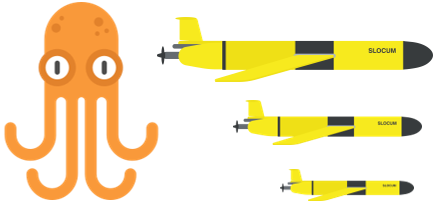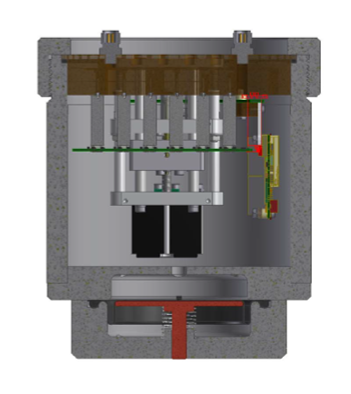The Oceanids programme is delivering sustainable research infrastructure through advancements in: vehicle design, autonomy and AI, command-control and data management, and ocean sensing.
|
Oceanids has continued the successful line of Autosub Long Range AUVs with the development of ALR1500. This class of three vehicles provides an all-new platform with a range, sensor-suite and innovative navigation system that is redefining the boundaries for over-the-horizon and under-ice exploration. Capable of deploying for up to three months, ALR is offering new opportunities for shore-based scientific missions that will mitigate the carbon cost of deploying from a large research ship. |
 |
|
Oceanids has developed a new large AUV that is equipped for high-power, shorter duration under-ice missions. Autosub Long Range 2000m Under Ice will be equipped with state-of-the-art sonars and imaging systems to enable scientists to create detailed maps and establish habitat characteristics of the seafloor. The vehicle has been designed to have the redundancy and under-ice navigation capabilities so that it can operate safely underneath vast areas of sea ice or glaciers, delivering science in the most challenging of environments. |
 |
|
Oceanids is working to replace the multitude of platform-specific command and control systems with a standard interface for command-control and data processing for the fleets of Marine Autonomous Systems (MAS) that will represent the backbone of the future net zero oceanographic research infrastructure. WIth an intuitive and user-friendly interface, the Oceanids C2 capability provides a powerful tool for enabling scientists to undertake agile mission planning, visualising their data to demonstrate UK science in action. |
 |
|
The Oceanids programme has supported 5 development grants for teams at the National Oceanography Centre, University of Exeter and University of Southampton to progress novel marine sensors to Technology Readiness Level (TRL) 8+, the standard where they can be used reliably for science and secure further private investment to bring this UK innovation to market. |
 |

